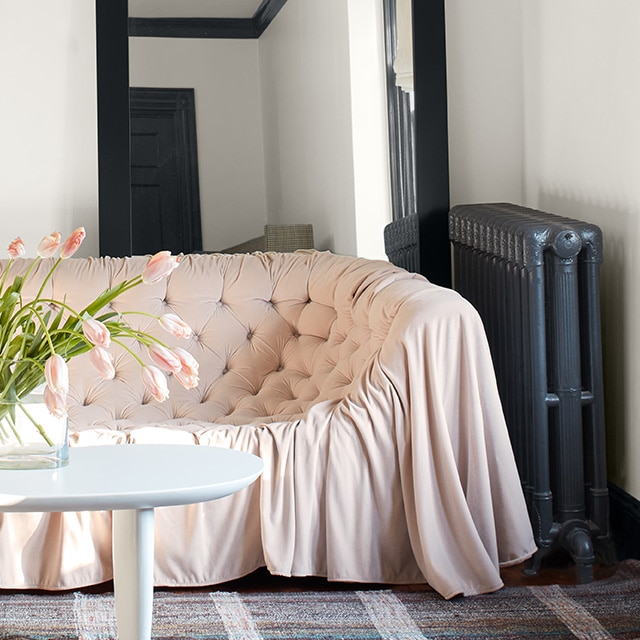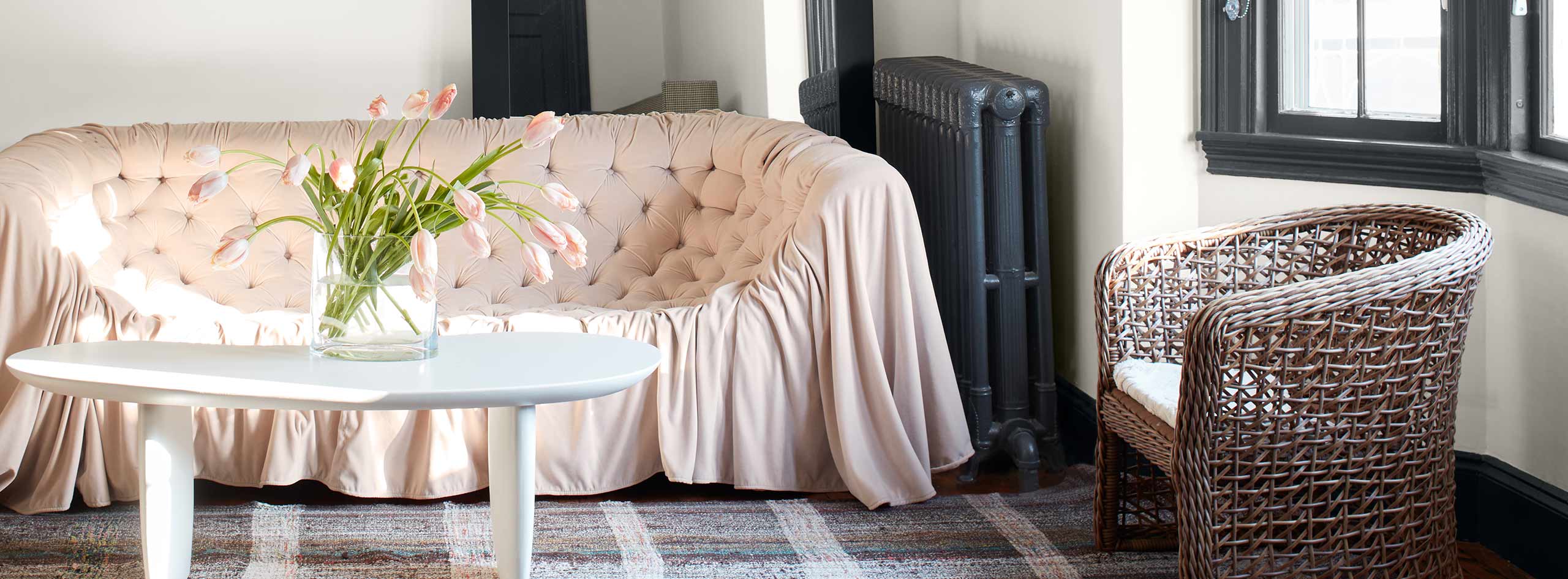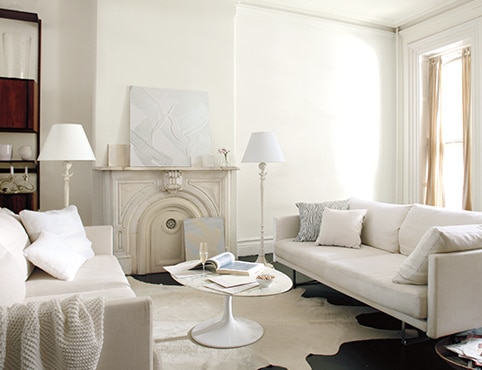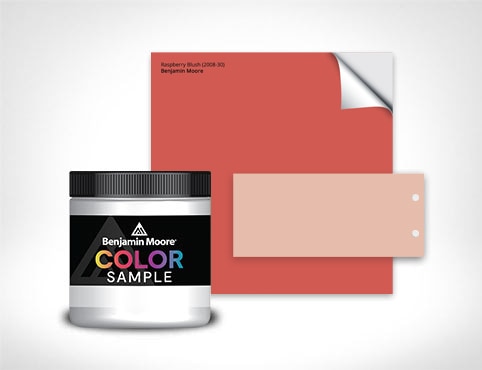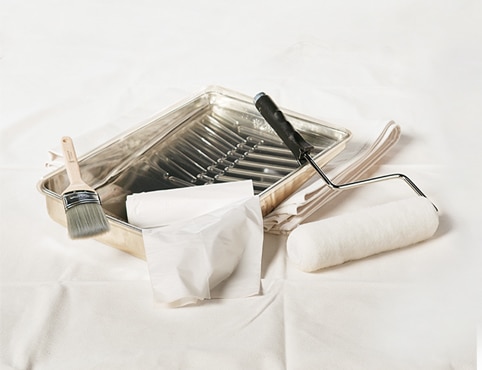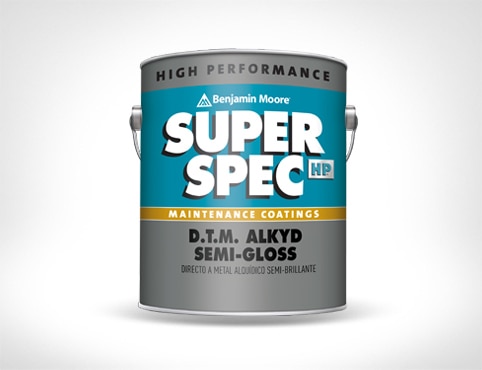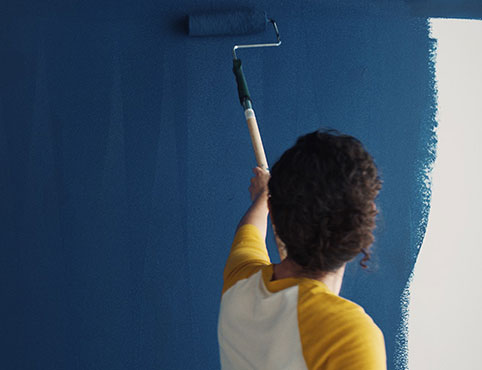Step #1: Turn Your Radiator Off and Let It Cool Completely
- Before you do anything, your radiator must be completely turned off and cooled down.
- This process could take up to a few hours, depending on how hot your radiator is and how long it’s been on.
- Painting a radiator while it’s still hot will not only lead to poor application and results, but is a safety concern.
Key Watchout
Because your radiator must be turned off—and stay off—throughout the painting process, consider painting your radiator during warmer months.Step #2: Prep Your Space
- Open a window for good ventilation.
- Place a drop cloth on the floor around your project space.
- Wear protective eye gear for safety and consider a dust mask for added protection against fumes.
- Do not remove the radiator from the wall. This is dangerous and not necessary to paint it.
- Place a piece of cardboard or poster board between the radiator and the wall.
- Tape off the control valves and air bleeder valves, steam vent valve, or air vent, depending on what type of radiator you have.
Helpful Tip
Tape any valves, caps or knobs that need turning. Paint can block vents and make it difficult to turn important control valves and other features.Step #3: Test for Lead Paint
- Test your radiator for lead before sanding, scraping, or otherwise disturbing surfaces that could possibly contain lead.
- Use a lead test kit, available at your local Benjamin Moore retailer, to test for lead paint.
- If you’re unsure of how to test, or you find there is lead paint on your radiator, contact a painting professional for safe removal.
Important
Safety Note
Safety Note
If you’ve detected the presence of lead and there is paint that is peeling off your radiator, a painting pro will help you remediate the issue.
Step #4: Clean and Sand the Radiator
- Use warm, soapy water and damp rags to clean the radiator. Let it dry completely.
- When the radiator is clean and dry, if there is rust or peeling paint, brush it with steel wool or sand it. However, do not do this if you have detected lead paint on the radiator or are unsure if lead is present.
- We recommend using either medium 180- to 220-grit sandpaper and a sanding sponge or steel wool to smooth the surface.
- Vacuum up any dust or sanding debris and wipe down the radiator with a damp rag or a microfiber cloth. Allow it to dry.
Helpful Tip
You don’t need much paint for a radiator, so be sure to get the most out of your gallon and tackle all your home’s radiators in the same weekend. We recommend this for painting baseboard heaters as well.Step #5: Spray or Hand Paint the Radiator
- Painting a radiator is easier than you probably thought, especially since there’s no need for a metal-specific primer—or any primer for that matter. If you’ve cleaned and sanded your radiator well, you can go straight to painting.
- Spraying paint is the most efficient way to paint a radiator. You’ll either need specialty heat resistant paint that comes in a spray can, like INSL-X® Decorative & Specialty Spray Paint, or a paint sprayer, available at your local Benjamin Moore retailer.
- Spray a coat of paint at approximately 10 to 16” away from the radiator using a back and forth motion to cover all surfaces.
- If you’re hand painting, we recommend using Super Spec® HP D.T.M. Alkyd paint, which is durable, able to withstand high heat, and inhibits rust. You can also use this product with a paint sprayer.
- Many people prefer painting with a paintbrush to get all the cracks and crevices found in radiators. Use an even coat of Super Spec® HP D.T.M. Alkyd to get the job done.
Step #6: Let Dry and Apply a Second Coat
- After waiting for the paint’s recoat time (found on the can), apply a second coat of paint evenly using the same method you did for the first coat.
- Remove the painter’s tape immediately after you’ve finished your second coat of paint.
- Be sure to wait for the paint to curedry completely before turning the radiator on again. This could take a few days.
- For specific details on recoat and dry times for any Benjamin Moore product you use, consult the back of the can and the product’s Technical Data Sheet.
Key Watchout
Whether you wait for one week or several months before turning on a newly painted radiator, you will likely experience odor for a short time.Don’t be surprised: A noticeable odor is to be expected when a radiator is turned on for the first time after painting, and will dissipate over time.
Consider turning the radiator on before you need it to mitigate exposure to fumes. If possible, turn the radiator on while the windows are open for good ventilation.
Find Your Next DIY Challenge
If you have another home project you want to update with paint, check out our painting how-to guides for tips and advice to tackle your next DIY project with ease.As always, visit your local Benjamin Moore retailer for help with all your painting needs.
